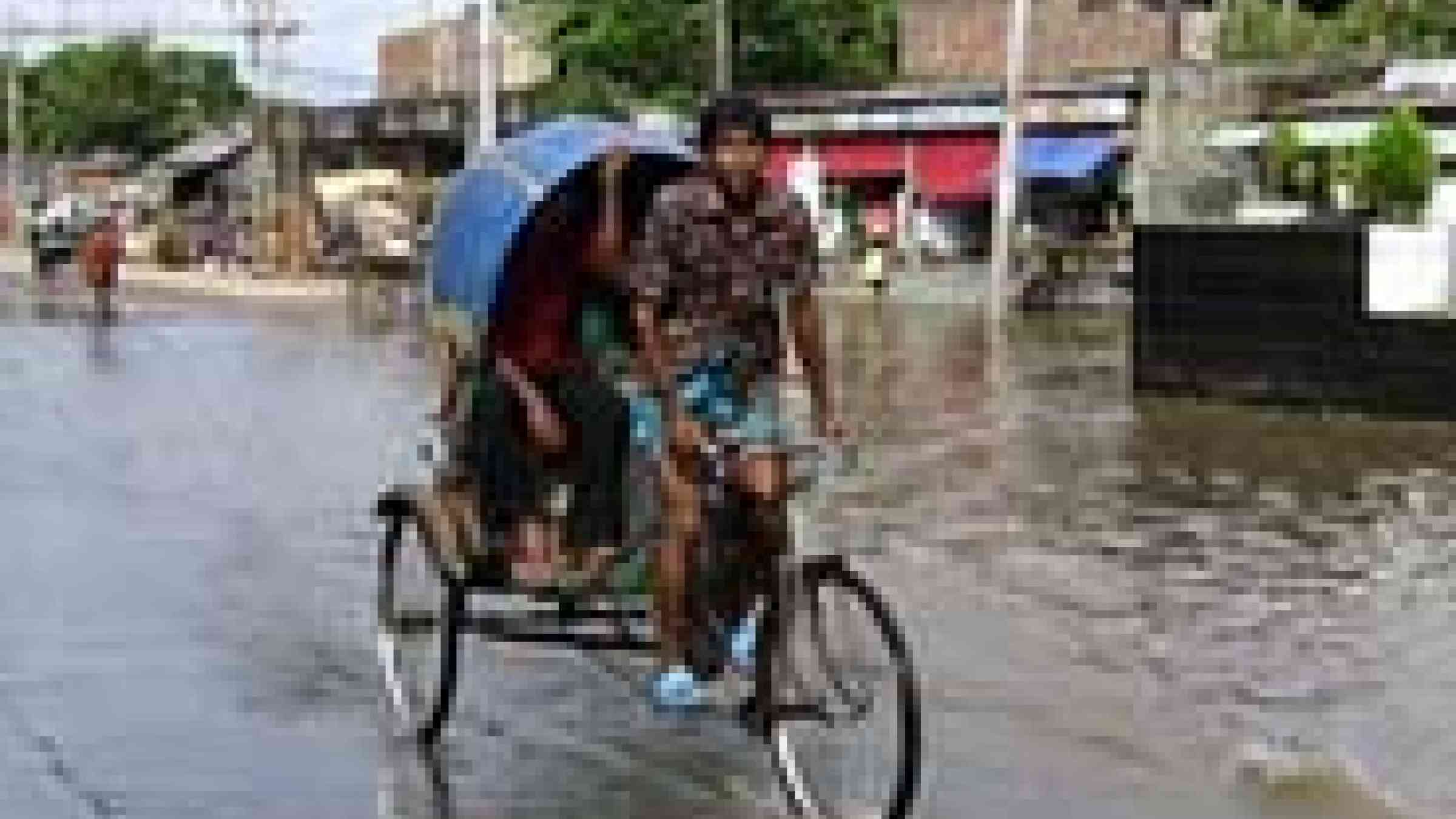Please help us improve PreventionWeb by taking this brief survey. Your input will allow us to better serve the needs of the DRR community.
Bangladesh: disaster lessons learned

photo by the Uncultured Project, licensed under a Creative Commons Attribution
Bangladesh communities are learning how to protect themselves from harm during a crisis, thanks to disaster mitigation, preparedness and awareness programmes carried out by Bangladesh Red Crescent volunteers.
The volunteers have been working in districts such as Tangail, which is prone to flooding every year from the river Jamuna, which flows through it.
Disaster risk reduction programmes were first introduced in Tangail in 2005, and have already made an impact, Communities affected by the 2007 floods adopted and practised measures before, during and after the crisis, which saved many lives and livelihoods.
With the proactive support of teams of trained Red Crescent volunteers, communities prepared makeshift rafts from banana trees and bamboo, helped people to safe shelter and provided first aid. In addition, disaster health volunteers disseminated key information on basic health and personal hygiene issues.
Protecting water supplies
The construction of raised tube-wells – which have high walls to prevent flood water from contaminating a community’s supply of drinking water – has also made a difference. In the Balarampur community of Tangail, a raised tube-well built by the Red Crescent was the only one to escape inundation during the 2007 floods, and was the only source of safe drinking water for at least 300 families.
“I want to drink safe water without having to walk for miles,” said community member Sahara Banu. “I will make more raised tube-wells with the help of my neighbours and community people.”
Suhana Begum, a Red Crescent disaster management volunteer in Tangail said: “Through this programme I learnt how to take precautions during and after floods. I also learnt how to store dry foods, prepare oral saline, give primary healthcare and also how to build Machaa (raised platform using bamboo) and make alok chula (mobile cooker).”
Fellow volunteer Ujjwal compared the flood response in 2004 and 2007. “After the formation of community disaster response teams, there have been improvements in flood response,” he said. “We helped each other in evacuation, went to higher grounds, and the community had sound knowledge on safety measures such as boiling drinking water to prevent diarrhea and preparing oral rehydration solution (ORS).”
Climate change
In addition to creating awareness on preparing for floods, local communities are also addressing and adapting to the impact of climate change. Joinal Sardar, aged 73, has noticed strong changes in the climate since 1988.
“Floods are becoming frequent and intense than in the past. However, I can see that the 2007 flood response is more effective than that during the 1988, 1998 and 2004 floods. This year the flood response was systematic as Red Crescent volunteers guided and supported the community members before, during and after the floods. I can see a positive change, and I can see how people will be prepared for the next spell of floods,” Sardar said.
Ashima is a 12-year-old who took part in an essay competition with the theme “disaster preparedness at household level.” Ashima hopes that, in the future, her village will be greener, suffer less flooding, and have more income-generating activities. Eventually she would like to become a Red Crescent volunteer to create awareness, plant more trees and resist the impact of climate change.
Nazmul Khan, who is in charge of the Bangladesh Red Crescent community based disaster management programme, says that the disaster preparedness message is getting across in the area, and that the community now has a better understanding of the risks they face.
“When I questioned the community during floods from 2001-2004, people reasoned floods as ‘God’s desire for flooding’, or ‘punishment for sins’. But now I am pleased to hear people saying flooding occurs due to climate change, or due to deforestation and high population pressure,” he said.
Cyclone Sidr
Disaster response volunteers from Tangail also responded swiftly when cyclone Sidr struck on 15 November 2007. A team of seven volunteers, including two members of the local Red Crescent Youth organization, were quickly deployed to the southern district of Bagerhat in Sharankhola, one of the areas worst affected by the ferocious storm.
“We had 1 lakh and 25 thousand Taka (about 2,000 Swiss francs). It took us three days to travel to Bagerhat. We had no place to stay when we got there. We ended up spending nights at the local cyclone shelter in Sharankhola,” said Shobuj, one of the team members.
The Tangail volunteers helped affected people by cooking them khichuri (rice mixed with lentils) for five days, and distributed 10,000 water purification tablets and 2,000 ORS packets. They also provided psychosocial support, and helped to clear debris and repair roads. In all, the seven volunteers reached out to more than 3,000 people in Sharankhola.
Although natural disasters occur in Bangladesh ever year, it is already evident that disaster risk reduction and preparedness measures are making communities more resilient. The presence of strong community-based disaster management programmes in flood-prone areas has also made an impact. This has not only strengthened Red Cross Red Crescent visibility, but also gives people solutions to face natural disasters and take measures to adapt and deal with climate change and its impact.
“Everybody has the instinct to help another human being,” said Sumon, a UDRT member. “The Red Cross Red Crescent provides a platform to allow individuals to reach out to vulnerable people to alleviate their suffering.”
Explore further
Please note: Content is displayed as last posted by a PreventionWeb community member or editor. The views expressed therein are not necessarily those of UNDRR, PreventionWeb, or its sponsors. See our terms of use
Is this page useful?
Yes No Report an issue on this pageThank you. If you have 2 minutes, we would benefit from additional feedback (link opens in a new window).